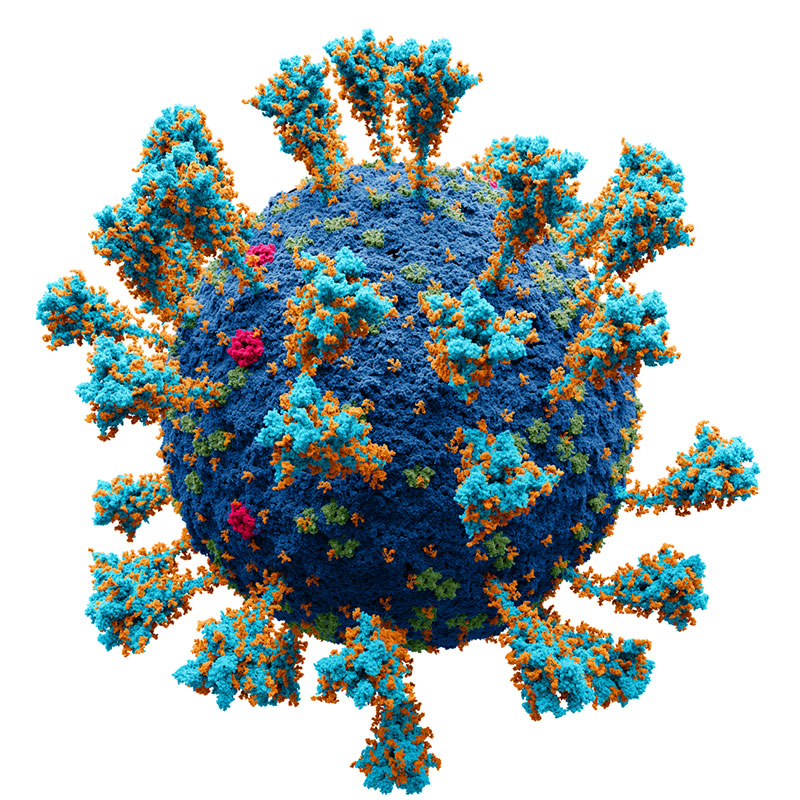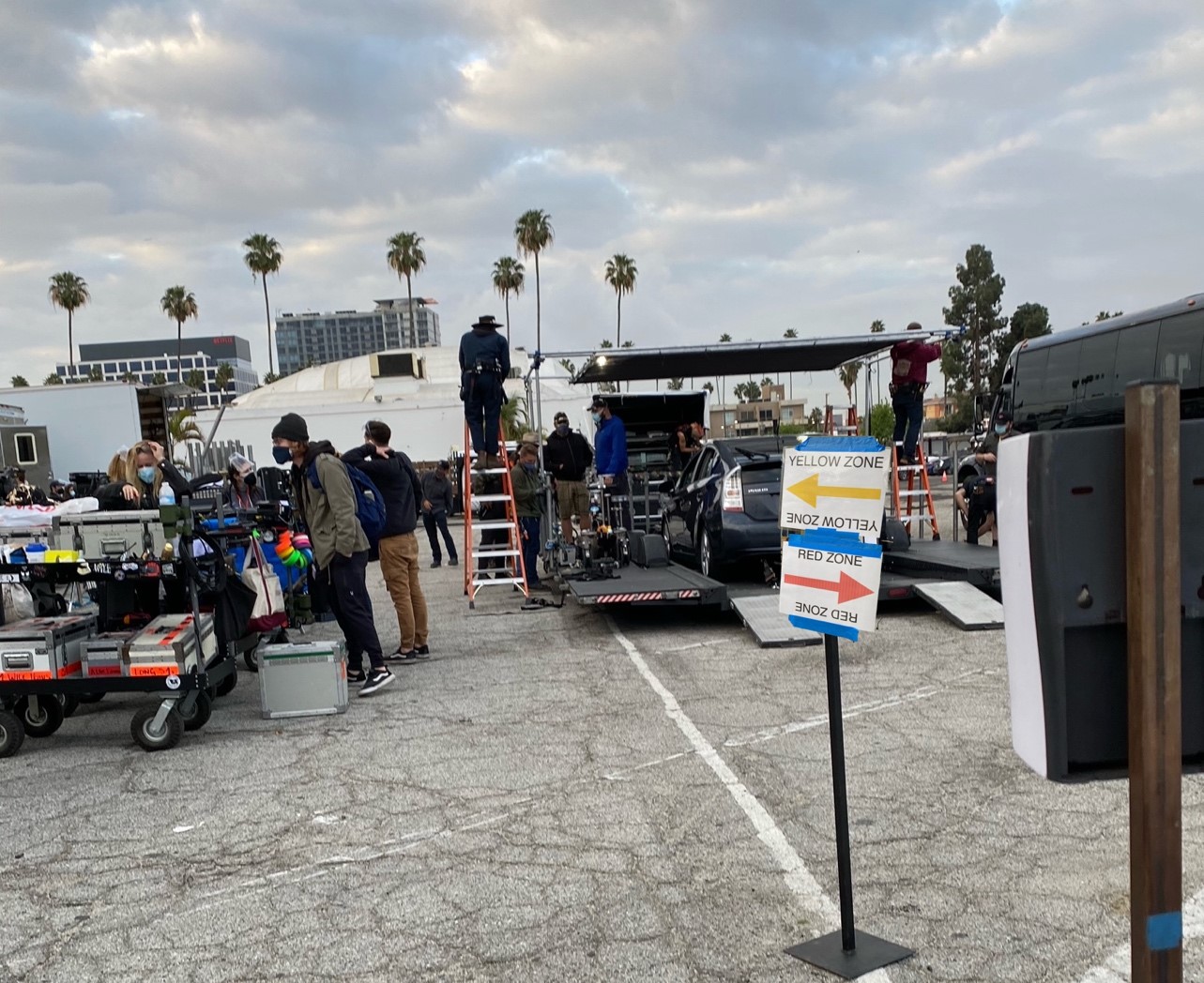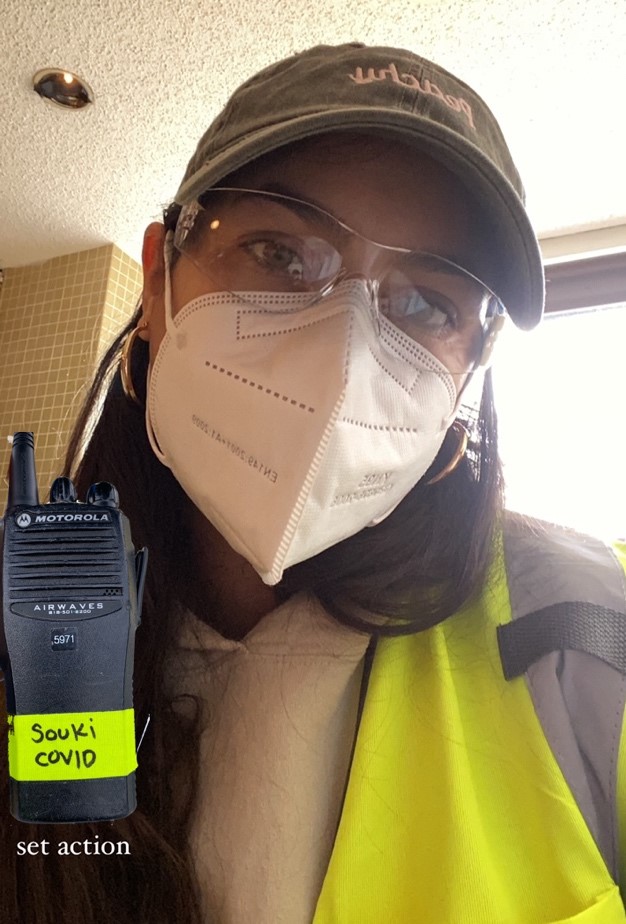One Health Newsletter
When the film industry takes on the COVID-19 pandemic: My experience on the set
Authors
Soukaina “Souki” Gonzalez
Archival Representative at Corporate Archives - Warner Bros. Entertainment Inc.
Los Angeles, CA, USA
Introduction
The 2019 coronavirus (COVID-19) pandemic has impacted nearly every aspect of our lives, and the film industry is no exception. It is estimated that the U.S. box office alone will lose more than US$5 billion this year, and many long-awaited films have been pushed back indefinitely.1
When the film industry had to face the pandemic − as with all other commercial sectors − the exercise was not easy because of the team and workplace diversity as well as extremely active working modes with an indispensable reactivity that requires a permanent adjustment in task execution (e.g., multiple actors in a single scene, change of scenario, changes in varied scenes, delicate and expensive materials).
It was essential to quickly learn how to assert safety, a priority in this industry, and apply the new health regulations. This diversity of both stakeholders and environments calls for a multisector approach. It compels public health guidelines and film industry to apply a One Health approach to protect its people and continue to serve the community with its permanent and fervent demand for entertainment.
The severe acute respiratory syndrome coronavirus 2 (SARS-CoV-2) has also influenced the graphic arts. Thanks to these extraordinary pictorial representations that showcase the dedicated efforts of scientists to understand and fight the SARS-CoV-2 pandemic (Figure 1).2 More than 50 movies based on or referring to the COVID-19 pandemic were produced in 2021 and are commercially available, and the first scripts of the 21st-century pandemic have occupied the cinematographic scene.3-5
Figure 1: The atomic structure of severe acute respiratory syndrome coronavirus 2 (SARS-CoV-2) Research Collaboratory for Structural Bioinformatics Protein Data Bank (RCSB PDB). Free license site RCSB PDB189436 Biological Macromolecular Structures Enabling Breakthroughs in Research and Education; Under the Creative Commons CC0 License.7
Preventing COVID-19 On Set
The film world changed its priorities drastically, and that was to learn how to work on set with an ongoing pandemic. The focus was shifted to ensure that cast and crew members were safe on set and to maintain safety with over 100 people on a film set at once. The health and safety team reinforced the One Health guidelines while working with pharmaceutical, biological, and clinical companies that provided, administered, and interpreted COVID-19 tests. The approach was conducted to figure out Zones A and B. Zone A was determined by people who would be on set every day and in proximity for an extended period. At the same time, Zone B included people who would not frequently be on set and usually work from outside the set. Determining these zones helped the health and safety department with recommended personal protective equipment (PPE) for both zones. Bathrooms and break areas were also divided into zones, and hand sanitizer dispensaries were available to minimize disease transmission.
Figure 2. A Movie Set and COVID-19 Zones (exterior): Defining safety zones on set (Photo credit: Souki Gonzalez, 2022)
The health and safety department set up an area where people would have to check in every morning before arriving on set, and entry on premises required clearance. First, the check-in consisted of completing a daily questionnaire about symptoms and previous exposures. Second, staff would obtain the appropriate PPE for the zone – Zone A wore eye shields and a KN95 mask, while Zone B wore a surgical mask. Finally, available rapid testing with staff nurses, with a quick turnaround time, was required. Following Centers for Disease Control (CDC) protocols, anyone in proximity, for more than 15 minutes, to an individual that tested positive, should obtain immediately a rapid test and self-quarantine.
Experiences on set
On our set, one person in Zone A had a positive test, and the entire production was closed for up to ten days and tested upon return.
Figure 3: Ready for the Movie Set. Individual wearing protective eyeglasses and KN95 with a walky-talky. (Photo credit: Souki Gonzalez, 2022)
It was imperative to make sure that all present people on set were following accurate protocols and seeking regular testing to ensure the safety of every person. So, reminding people to wear their masks, face shields, and eyewear, and to stay six feet apart was a daily task, as people were also getting used to working on set during a pandemic.
Conclusion
As a result of the COVID-19 pandemic, numerous films have had their theatrical releases canceled in the United States alone, resulting in an alternative announcement pattern with delayed releases. In the US film industry, more than 155 films were delayed to 2020 and produced in 2021 or 2022. The pandemic directly affected more than 80 productions, causing them to be suspended, delayed, or canceled, with a significant economic impact on the industry and employment.6
However, the production has been maintained, and thanks to the resilience of the film industry in these difficult times of pandemic, it will have allowed to bring the strong demand for entertainment by the population and contribute, in a certain way, to wellness and the optimal mental health of all.
References
-
Chojonowski P. How COVID-19 has affected the film industry. Florida University. https://union.fsu.edu/movies/blog/COVID. Accessed Mar 13, 2022.
-
Solodovnikov A. Scientifically accurate atomic model of the external structure of the severe acute respiratory syndrome CoronaVirus 2 (SARS-CoV-2), a strain (genetic variant) of the Coronavirus that caused Coronavirus disease (COVID-19), first identified in Wuhan, China, during December 2019. Wikimedia Commons. https://commons.wikimedia.org/wiki/File:Coronavirus._SARS-CoV-2.png Accessed Mar 13, 2022.
-
Coronavirus, explained. Netflix. https://www.netflix.com/title/81273378. 2020. Accessed Mar 13, 2022.
-
Kok V. All u need is love. Internet Movie Database IMDb. 2021. https://www.imdb.com/title/tt14150116/. Accessed Mar 13, 2022.
-
Von Einsiedel O. Convergence: courage in a crisis. 2021. Internet Movie Database IMDb. https://www.imdb.com/title/tt15398694/?ref_=tt_mv. Accessed Mar 13, 2022.
-
Sacks E. 2020. Independent filmmakers have found ways to navigate the pandemic and get audiences to films. NBC News. Accessed April 16, 2022. https://www.nbcnews.com/news/us-news/independent-filmmakers-have-found-ways-navigate-pandemic-get-audiences-films-n1247218.
Next story: One Health formally defined: mainstreaming the approach to respond to future global health threats
One Health Newsletter
The One Health Newsletter is a collaborative effort by a diverse group of scientists and health professionals committed to promoting One Health. This newsletter was created to lend support to the One Health Initiative and is dedicated to enhancing the integration of animal, human, and environmental health for the benefit of all by demonstrating One Health in practice.
To submit comments or future article suggestions, please contact any of the editorial board members.


